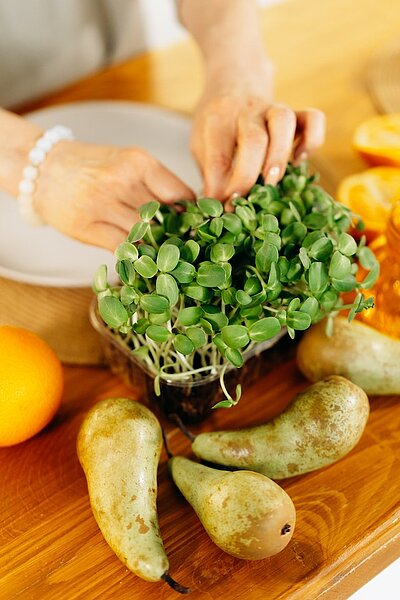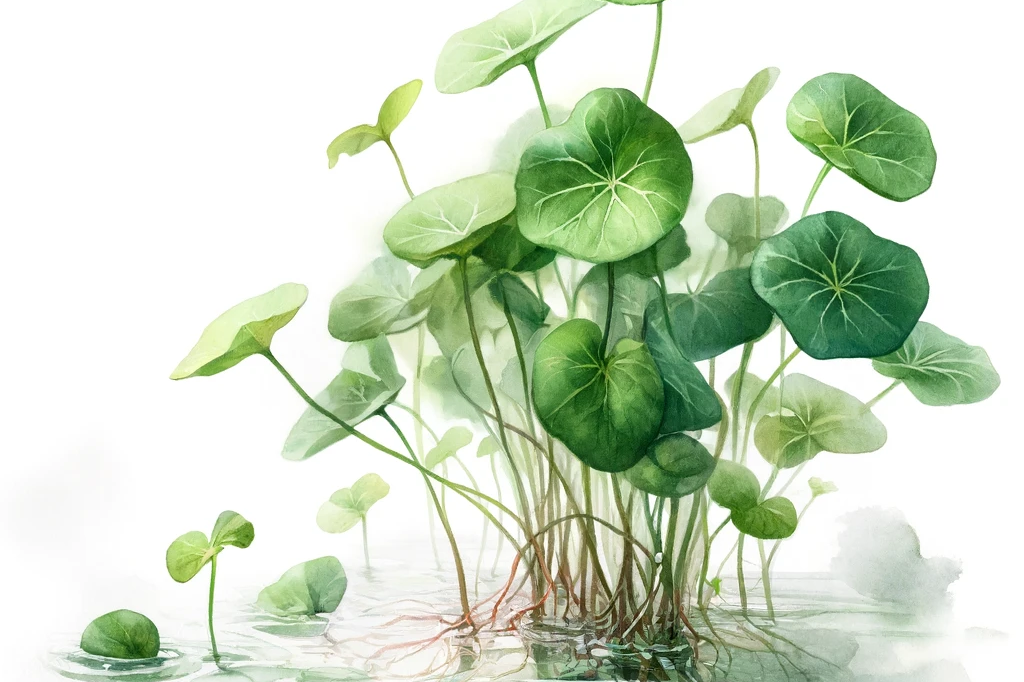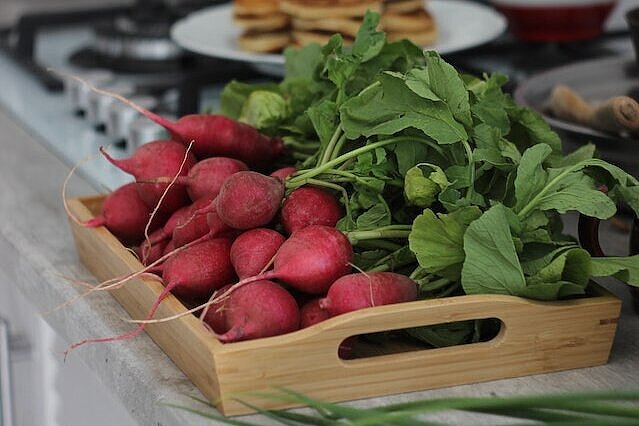Cress

What is cress?
Cress is a collective term for various plant species from the cruciferous family. The best known are garden cress, watercress and nasturtium. Cress grows quickly and can be harvested all year round. It is usually eaten fresh or cooked briefly.
What are the benefits of cress for dogs?
Cress has a number of health benefits for dogs. It is rich in vitamin C, which strengthens the immune system and protects against infections. It also contains vitamin A, which is good for the eyes and skin, and vitamin K, which promotes blood clotting. Cress also provides iron, calcium, magnesium and folic acid, which are important for blood formation, bones and the nervous system.
Cress also has an antibacterial and anti-inflammatory effect. It can help to reduce bad breath and prevent gum inflammation. It can also have a soothing effect on gastrointestinal complaints such as diarrhea or flatulence.
However, as with all plants, cress should only be fed in moderation. Too much cress can lead to side effects.
What are the disadvantages of cress for dogs?
Cress contains mustard oil glycosides, which are responsible for its pungent taste. These can cause irritation of the mucous membranes in dogs, especially in the mouth and throat. This can lead to coughing, sneezing or vomiting. Mustard oil glycosides can also impair thyroid function and lead to hyperthyroidism or hypothyroidism.
Cress can also trigger allergies or intolerances. This can manifest itself in skin rashes, itching or diarrhea. If you notice that your dog is sensitive to cress, you should stop eating it immediately and consult a vet.
How can you offer cress to your dog?
If you want to feed your dog cress, there are a few things you should bear in mind:
- Choose fresh and organic cress. Avoid sprayed or treated cress as it may contain pesticide residues or other chemicals.
- Wash the cress thoroughly to remove any dirt or germs.
- Cut the cress into small pieces or puree it. This will prevent your dog from choking on the stems or injuring himself.
- Mix the cress into your dog's normal food. Only give a small amount (about a teaspoon per 10 kg of body weight) and observe your dog's reaction.
- Do not feed cress daily, but only occasionally as a supplement. This way you can avoid overdosing or habituation.
Cress can be a healthy and tasty change for dogs. It contains many vitamins and minerals and has a positive effect on the immune system, digestion and breath. However, cress should only be fed in small quantities as it can also cause side effects such as irritation or thyroid problems.
Properties 4
Are you looking for other ingredients with a specific property?
Just click on them to find more.
If you notice any signs of hypersensitivity or poisoning in your dog, you should see your vet immediately. We are not a substitute for a vet, but we try to be as accurate as possible. Every dog reacts differently and we recommend you get a second opinion or consult your vet if in doubt.
Stay healthy and take good care of your four-legged friend!😊
Similar to Cress
Watercress (Nasturtium officinale) is a winter-green, perennial plant that can grow up to 70 centimetres high. It has hollow stems that lie or float in water and leaves that are pinnate. The leaves...
The tuberous nasturtium (Tropaeolum tuberosum) belongs to the cruciferous family and originates from the Andes in South America. It has been cultivated and used as food there for centuries. The...
Winter radish is a variety of radish that is harvested in the fall and winter. It has a white skin and white flesh that tastes very pungent. It is also known as daikon or mooli and is particularly...
Radishes belong to the cruciferous family, which also includes broccoli, cabbage and mustard . They contain a lot of mustard oil, which is responsible for their typical taste. They also have a high...



